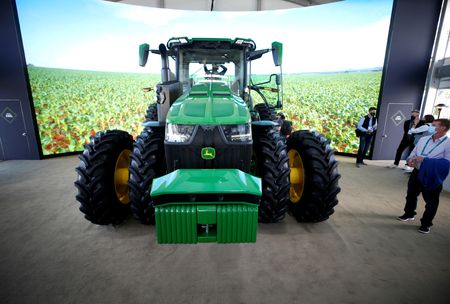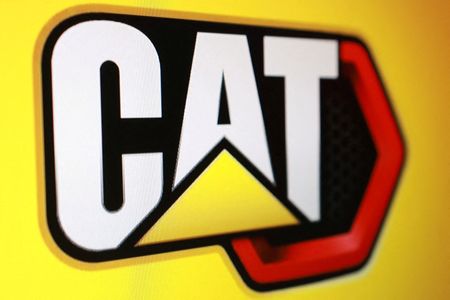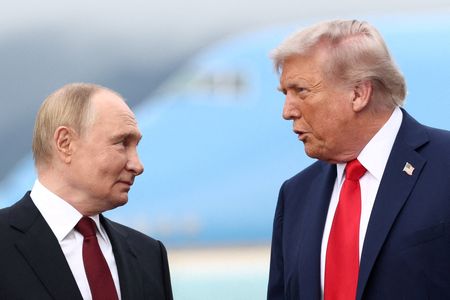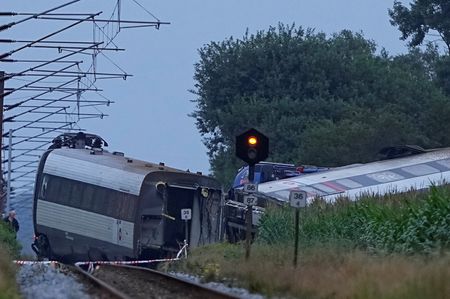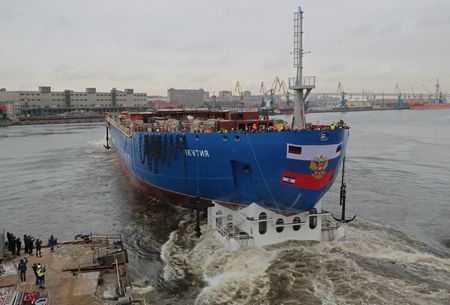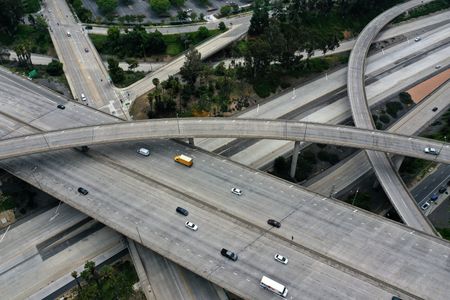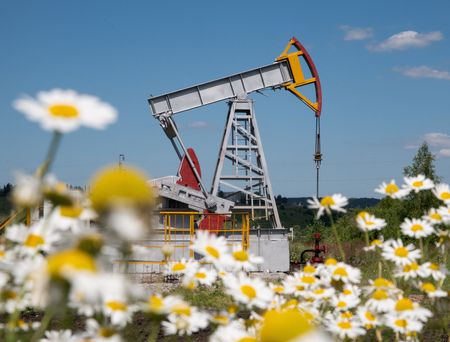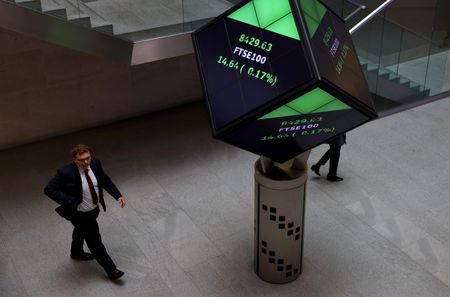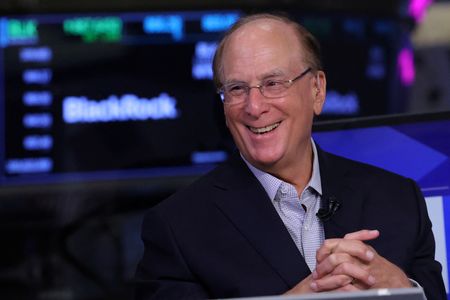By Shivansh Tiwary and Nathan Gomes
(Reuters) -Industrial machinery makers are being battered by steeper costs from U.S. President Donald Trump’s sweeping tariffs, with sluggish demand and high interest rates leaving little room to pass those expenses onto customers.
Caterpillar and Deere, both sector bellwethers, have flagged hefty tariff-related hits this year, most of which they expect to absorb in the coming months as policy shifts keep markets on edge.
Global companies that reported between July 16 and August 14 projected a combined financial hit of $14.2 billion to $15.8 billion for the full year, the Reuters’ tariff tracker shows.
During their respective earnings calls, Caterpillar said tariffs on imported components and materials would weigh on margins, while Deere warned of higher costs for steel and other inputs critical to its agricultural and construction equipment.
The new round of tariffs, part of Trump’s expansive push to protect U.S. manufacturing and narrow trade deficits, covers a wide range of industrial goods and raw materials.
Machinery makers are already contending with a soft demand environment, as an uncertain economic outlook and elevated borrowing costs prompt customers to delay large capital investments.
Deere was not able to raise prices as much as expected in its construction and forestry unit, while price increases in its agriculture business were modest and a bit below forecasts, Edward Jones analyst Faisal Hersi said.
That has made it harder to pass on rising expenses, a sharp contrast to the pandemic years when resilient farm incomes and robust infrastructure spending allowed equipment makers to offset supply chain disruptions with price hikes and shield their margins.
Quarterly operating profit in Deere’s construction & forestry unit roughly halved from last year, while Caterpillar’s overall operating profit fell nearly 20%.
The tariff hit will be felt most in Deere’s Small Ag & Turf and Construction & Forestry units, Jefferies analyst Stephen Volkmann said, with pricing moves only partially offsetting the blow.
While the levies are designed to spur domestic production, they have raised concerns among manufacturers that rely on global supply chains.
Deere expects just a 1% price gain this year in its largest division, Production & Precision Agriculture, leaving little to cushion a hit from normal cost inflation.
Caterpillar is facing as much as $1.5 billion in tariff-related costs in 2025, including $400 million to $500 million in the third quarter alone, but is keeping its revenue guidance slightly above 2024 levels.
“Currently, inventory destocking is the norm as demand cools, pressuring CAT and DE’s ability to push through higher prices onto their customer base,” CFRA Research analyst Jonathan Sakraida said.
On the demand side, Caterpillar is finding some relief in its Energy & Transportation unit, which supplies engines, turbines, and locomotives for industries from power generation to rail, with strength there helping offset weakness in its Construction Industries and Resource Industries segments.
Deere, with its heavier reliance on the farm equipment market, has faced a sharper slowdown, with sales down nearly 18% so far this year.
Caterpillar’s power generation business, for instance, is avoiding deep discounts to clear inventory, while Deere is expected to take a more aggressive pricing stance in Brazil as those markets move into a recovery phase, Sakraida said.
The world’s largest farm equipment maker, which expects $600 million in tariff impacts this year – $100 million north of its prior expectation, has cut its annual profit forecast twice this year as slowing farm equipment sales weigh on results.
(Reporting by Shivansh Tiwary and Nathan Gomes in Bengaluru; Editing by Anil D’Silva)

